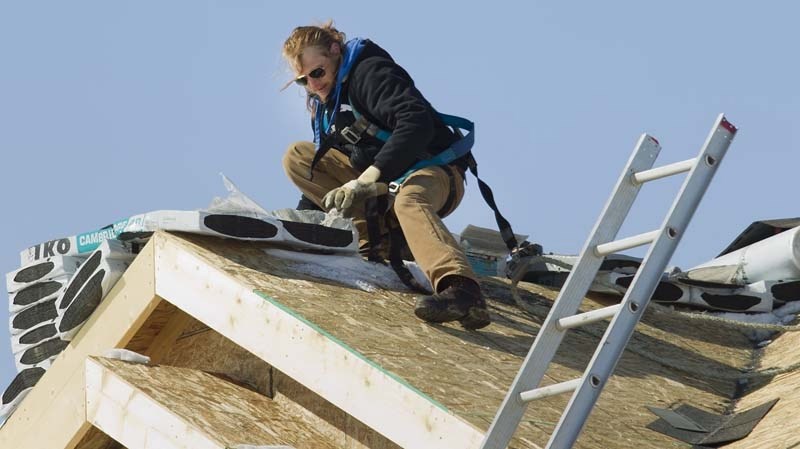Homeowners and builders will soon have to adjust to rising prices, and changing construction procedures in the province.
Come Nov. 1, the New Home Buyer Protection Act will require builders to provide a warranty for all new homes in Alberta.
Under the act, new homes will come with a minimum one-year warranty on labour and material, two years for plumbing and electrical systems, five years of protection from water damage, and 10 years for major structural components.
“You won’t be able to get a permit to build a home unless you can prove that you have a warranty,” said Mike Garritty, president of Progressive Home Warranty in St. Albert.
The legislation comes after numerous complaints from owners who were evicted from their new homes or condominiums after water damage and other structural deficiencies appeared in the building.
Warranties are expected to add a cost of $1,700 to $2,000 on a single-family home, about one per cent of the selling price.
Until now, home warranties were not mandatory in Alberta, though banks often require owners to have warranty coverage before giving out mortgages.
Garritty said there are four warranty providers in the province and most builders are affiliated with them. It’s often the smaller, home-based builders that offer no coverage.
He said warranties are the promise of a builder to come back and fix the home if something fails. If the builder is unable to do this for financial reasons, the warranty provider comes in and looks after it.
“But you have to go to your builder first and if you have a problem with that relationship, things don’t get done,” he said.
“We are a third party, we are unbiased in that we are there to represent both the home builder and the homeowners.”
Garritty said the new warranty is much broader than insurance programs provided in the past. It will hold builders financially responsible for a longer time and require them to train for new building practices.
It will also add pressure on the warranty provider to inspect homes more carefully.
“We have to be a little more careful about the types of buildings we take in and the risks we are associating ourselves with and how we mitigate them,” he said.
In most cases the insurance premiums collected by the warranty provider will cover the cost for repairs, he said.
But builders will add to the cost of homes to cover for repairs ahead of time. That could potentially raise the price of a $400,000 home to $450,000.
“They are not building submarines … There are about 3,000 components in a home and a great number of those make out the exterior of the home and for that to not have a leak is pretty tough to do,” Garritty said.
“Your teams have to be on their game to make that happen.”
Though the consumer pays more for a new home, he also saves on the cost of repairs later, said Gary Acheson, president of Sarasota Homes in St. Albert.
A home is most likely the largest purchase a person will ever make and people will only benefit from higher building standards, he said.
“In an unregulated industry there is a potential for builders and their trades not to do a proper job at the expense of the consumer,” he said.
“I think it is in their best interest that all the homes are built to appropriate standard and quality.”
Acheson does not expect dramatic changes in the industry as most builders are already affiliated with warranty programs and have to apply to provincial building codes.
But other builders worry that the warranty may not protect them against a small percentage of owners who don’t treat their home carefully.
“The major thing that people do wrong in their houses is not use their ventilation system properly, run their humidity level way too high, and fail to maintain their mechanical equipment,” said Claude Rekken, construction manager for Edmonton-based ReidBuilt Homes.
“And even if we are successful in showing that it was their own doing there is obviously a lot of investigation time and a lot of work involved in defusing the situation.”
Rekken said his biggest objection to the warranty program is the added effort. If a homeowner bought from him last year and maintained the house properly, they would have no issues.
Under the new criteria, the home will cost the buyer more money and perform the same way, he said.
He added that the problem is often with the smaller builders that work out of their home and don’t provide the same standard as large companies.
One loophole in the legislation that worries Garritty is that builders who construct their own home won’t have to provide a warranty for it. They can later sell the house, leaving the buyer unprotected.
“We are hopeful that the government will be very careful about how they give out these exemptions,” he said.
“Because now what will you do as a buyer, how will you protect your interest when you buy a house that was built in 2014 and that you presume has warranty on it.”
At this time, Garritty said there are about 500 out of 25,000 homes that are self-built and unwarranted.
Once the legislation comes into place, he worries that number will grow to 25 to 30 per cent of all new homes. That was the case in British Columbia, which already has a new home warranty program in place.




